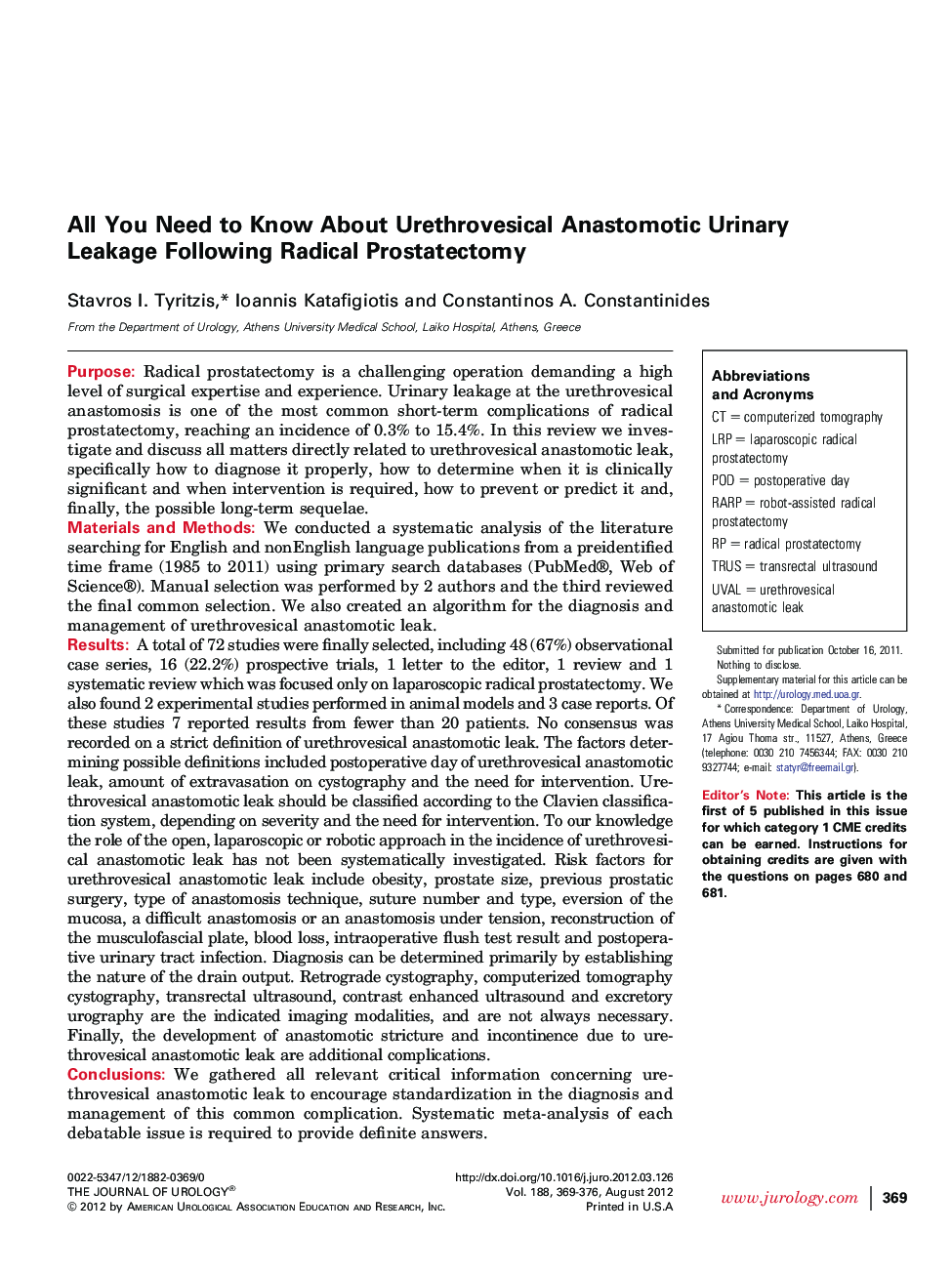| کد مقاله | کد نشریه | سال انتشار | مقاله انگلیسی | نسخه تمام متن |
|---|---|---|---|---|
| 3867017 | 1598932 | 2012 | 8 صفحه PDF | دانلود رایگان |

PurposeRadical prostatectomy is a challenging operation demanding a high level of surgical expertise and experience. Urinary leakage at the urethrovesical anastomosis is one of the most common short-term complications of radical prostatectomy, reaching an incidence of 0.3% to 15.4%. In this review we investigate and discuss all matters directly related to urethrovesical anastomotic leak, specifically how to diagnose it properly, how to determine when it is clinically significant and when intervention is required, how to prevent or predict it and, finally, the possible long-term sequelae.Materials and MethodsWe conducted a systematic analysis of the literature searching for English and nonEnglish language publications from a preidentified time frame (1985 to 2011) using primary search databases (PubMed®, Web of Science®). Manual selection was performed by 2 authors and the third reviewed the final common selection. We also created an algorithm for the diagnosis and management of urethrovesical anastomotic leak.ResultsA total of 72 studies were finally selected, including 48 (67%) observational case series, 16 (22.2%) prospective trials, 1 letter to the editor, 1 review and 1 systematic review which was focused only on laparoscopic radical prostatectomy. We also found 2 experimental studies performed in animal models and 3 case reports. Of these studies 7 reported results from fewer than 20 patients. No consensus was recorded on a strict definition of urethrovesical anastomotic leak. The factors determining possible definitions included postoperative day of urethrovesical anastomotic leak, amount of extravasation on cystography and the need for intervention. Urethrovesical anastomotic leak should be classified according to the Clavien classification system, depending on severity and the need for intervention. To our knowledge the role of the open, laparoscopic or robotic approach in the incidence of urethrovesical anastomotic leak has not been systematically investigated. Risk factors for urethrovesical anastomotic leak include obesity, prostate size, previous prostatic surgery, type of anastomosis technique, suture number and type, eversion of the mucosa, a difficult anastomosis or an anastomosis under tension, reconstruction of the musculofascial plate, blood loss, intraoperative flush test result and postoperative urinary tract infection. Diagnosis can be determined primarily by establishing the nature of the drain output. Retrograde cystography, computerized tomography cystography, transrectal ultrasound, contrast enhanced ultrasound and excretory urography are the indicated imaging modalities, and are not always necessary. Finally, the development of anastomotic stricture and incontinence due to urethrovesical anastomotic leak are additional complications.ConclusionsWe gathered all relevant critical information concerning urethrovesical anastomotic leak to encourage standardization in the diagnosis and management of this common complication. Systematic meta-analysis of each debatable issue is required to provide definite answers.
Journal: The Journal of Urology - Volume 188, Issue 2, August 2012, Pages 369–376